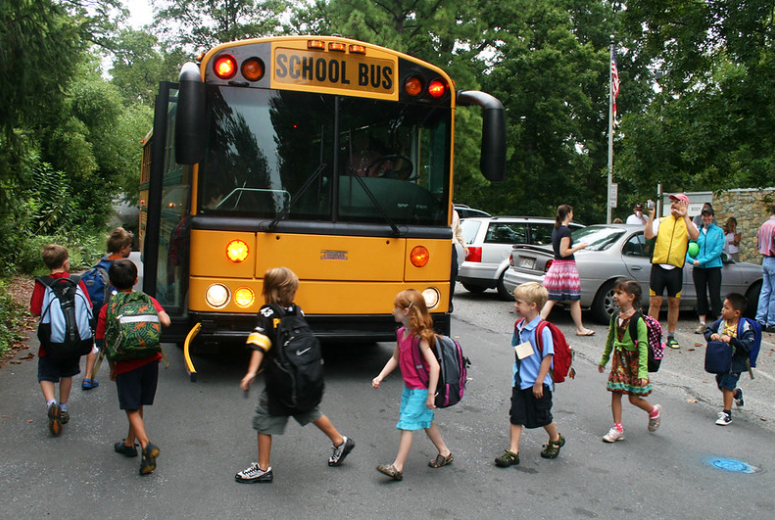If Alabama’s state government wants to fundamentally change the educational options available to students and improve outcomes, school choice must be on lawmakers’ agenda when they convene in March 2023.
Despite record increases in education funding, Alabama’s national testing scores have worsened over the last 25 years. According to the most recent National Assessment of Educational Progress (NAEP), Alabama’s 2022 average eighth-grade math score was 264 out of 500 possible points, a three-point decrease from 2019, the same score that Alabama students had in 2000. Average eighth-grade reading scores decreased from 253 points in 2019 to 251 points in 2022, four points below where students scored in 1998.
The current model is broken. Something must change.
School choice programs allow state public education funds to follow a student to the school or learning environment that best fits his individual needs. That could be a public school different from the one the student is currently zoned for, a private school, charter school, home school, or any other type of learning opportunity that parents think best meets the needs of their child.
While Alabama has discussed school choice for years, the concept hasn’t gained serious legislative traction. Recent comments from top state government officials indicate that this year could be different.
During her inaugural speech last month, Gov. Kay Ivey (R) called for meaningful school choice discussions saying, “We cannot let our students continue to struggle and rob them of a chance to achieve their dreams.” Ivey pledged that by the end of her term Alabama will rank in the top 30 states for reading and math scores for the first time in state history.
Lt. Gov. Will Ainsworth (R) also referenced school choice at the inauguration, urging quality education regardless of zip code. “With the authorization and continuing expansion of charter schools and school choice across the state, we have given parents a measure of decision-making power over how their children are taught,” Ainsworth said. “But we must keep working to improve, reform and fully fund the public education opportunities that Alabama provides.”
It is a good thing that the state’s two top-ranking elected officials have vowed to improve the state’s educational system and are open to pursuing a school choice program. But at this point, it is unclear what school choice means to Ivey and Ainsworth.
It could mean expanding the Alabama Accountability Act (AAA) enacted in 2013. AAA established a scholarship program for low-income students, who are often zoned for failing schools, to attend qualified private schools. Alabamians can make individual donations of up to $100,000 annually and receive a tax credit. The total amount of tax credits is capped at $30 million per year, though the program is perpetually underfunded.
Expanding school choice could also mean opening more charter schools. Charter schools were established by the Alabama School Choice and Student Opportunity Act of 2015, the first school opening two years later. The rollout has been slow, and there are currently only 11 charter schools in the state.
Local school boards are given much control in the process. As of May 2022, the Birmingham school system had failed to approve any charter school application, denying more applications than any other district.
But reforms to the charter school system alone will not make significant progress towards improving education in Alabama. Lawmakers must think bolder.
Alabama needs a full-scale school choice program for all public school students. In 2021, the state spent approximately $6,600 per student, not including federal and local dollars. A wide-ranging school choice program would allow families to take those state funds and use them for a host of approved education options, from private school to online curriculum, private tutors, and more. Controls would be enacted to ensure that the money is spent appropriately.
If you are wondering if this type of system would provide meaningful improvements to the quality of education in Alabama, you need only look south to Florida.
When it began its school choice program in 1999, Florida’s students ranked near Alabama in NAEP scores. Critics said the program would “abandon public schools” and “kill public education.”
It has done the opposite. Florida students achieved the state’s highest rankings ever in 2022, with fourth-grade students scoring in the top four in the country for reading and math proficiency. Despite expanding its school choice program several times in the last 24 years, Florida currently spends less money per pupil than Alabama.
Why does Alabama continue to wait? School choice is the right move for Alabama.
Justin Bogie serves as Fiscal and Budget Reporter for 1819 News. The views and opinions expressed here are those of the author and do not necessarily reflect the policy or position of 1819 News. To comment, please send an email with your name and contact information to: Commentary@1819News.com.
Don't miss out! Subscribe to our newsletter and get our top stories every weekday morning.










